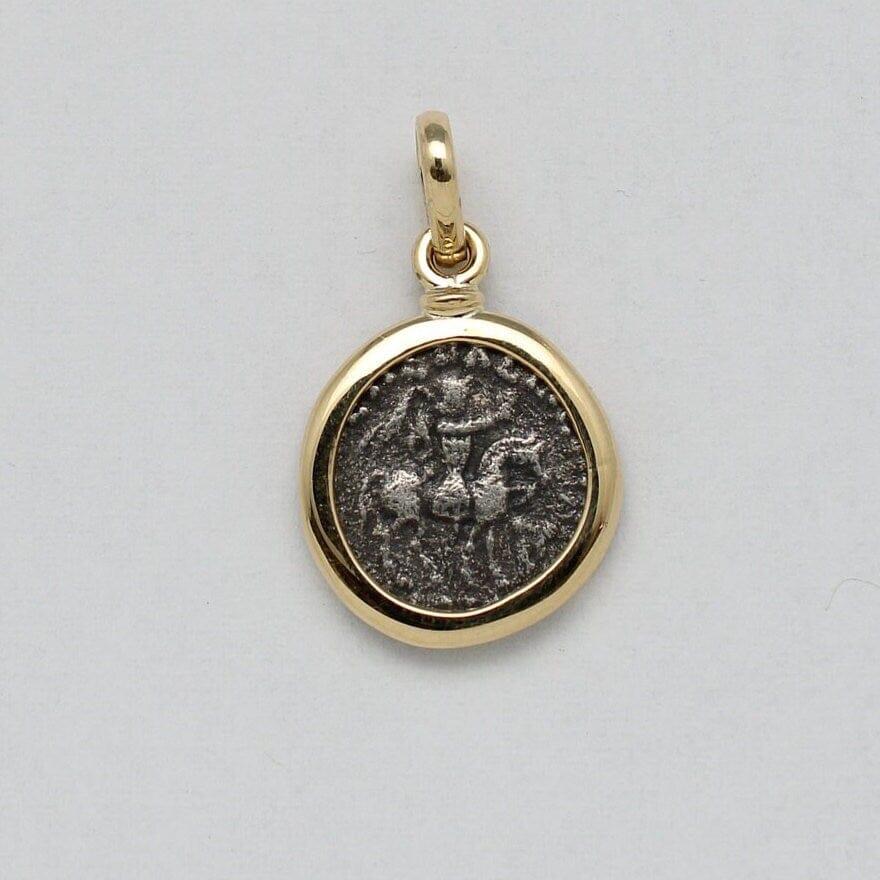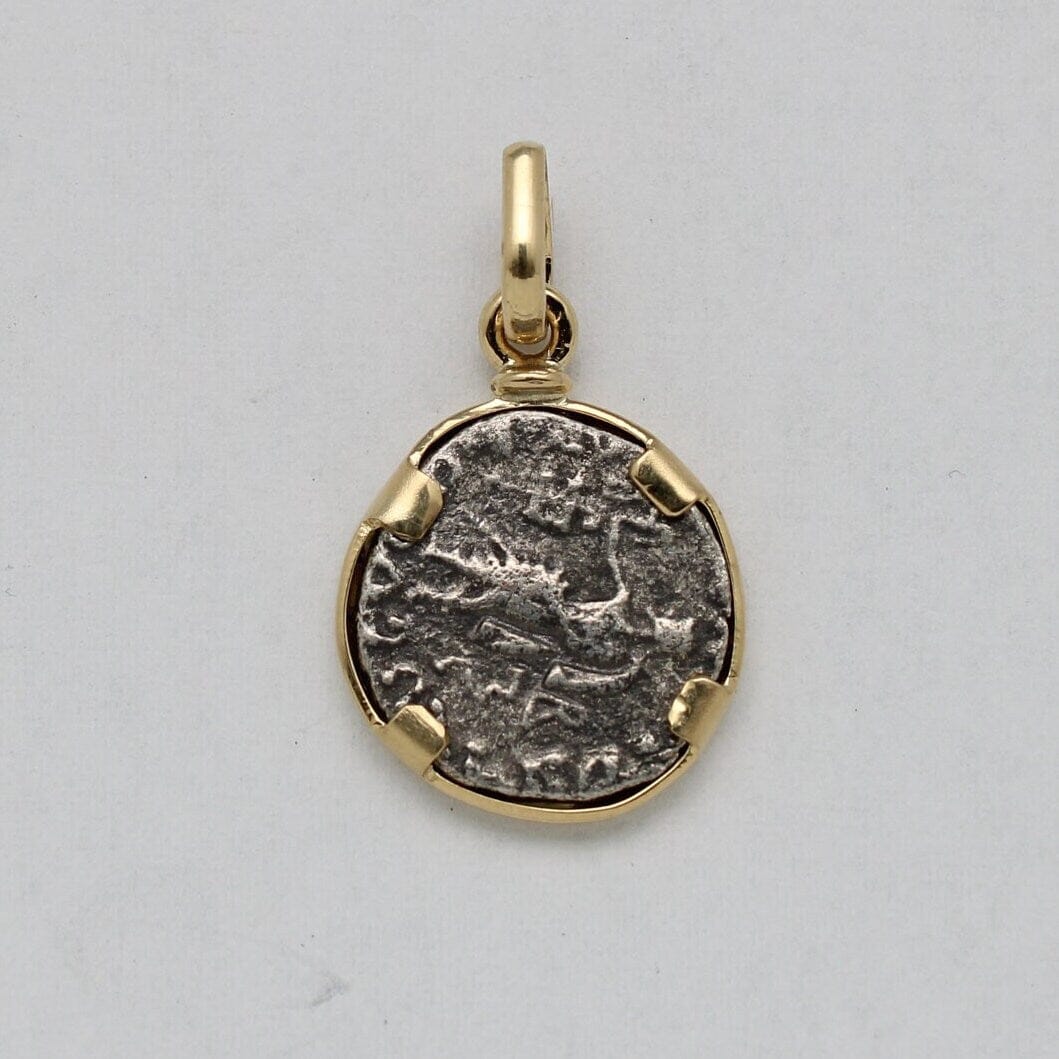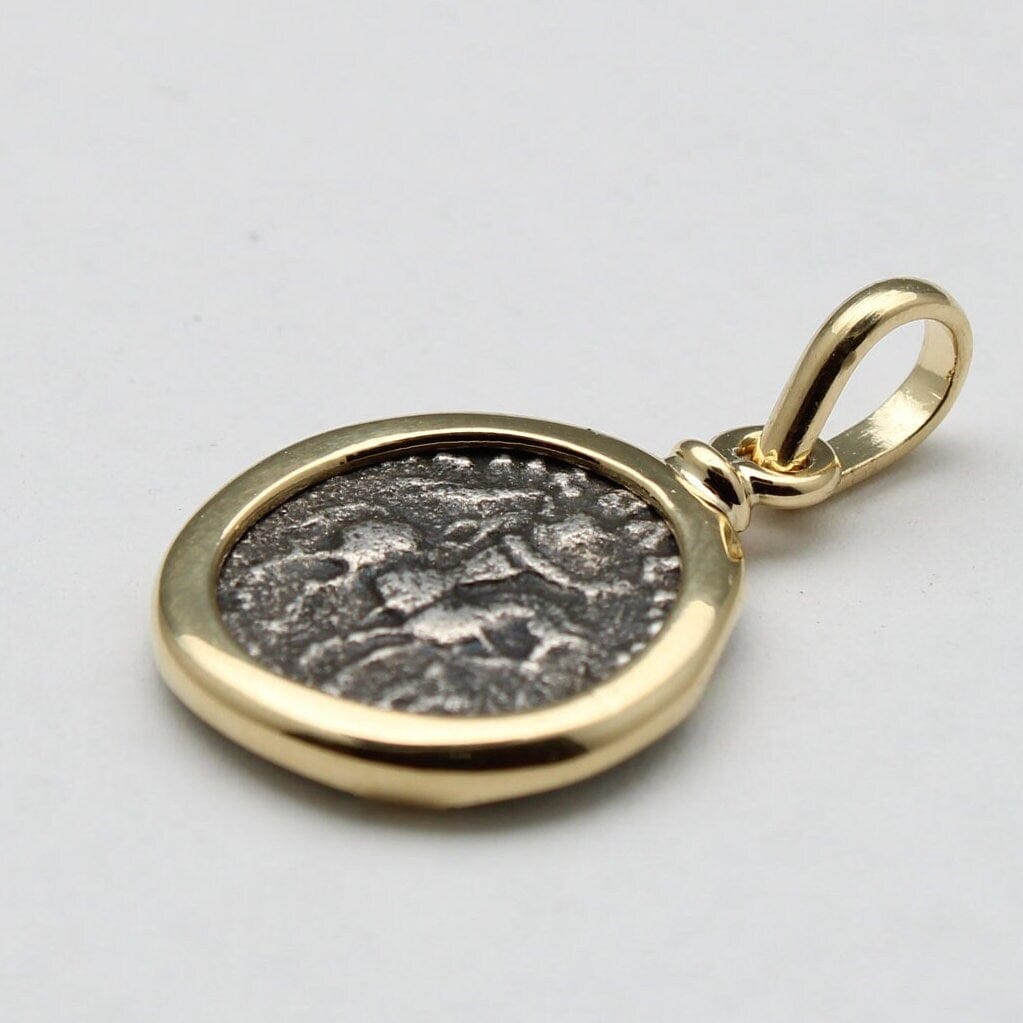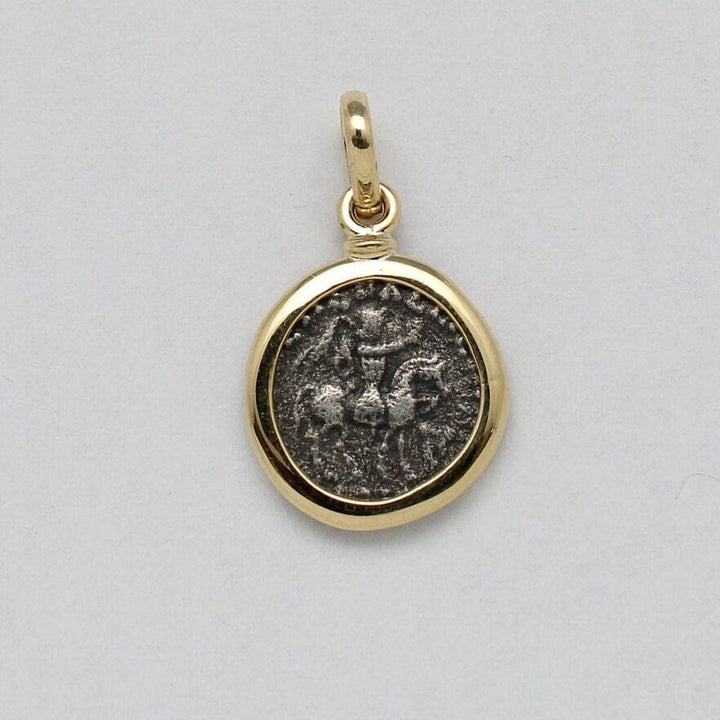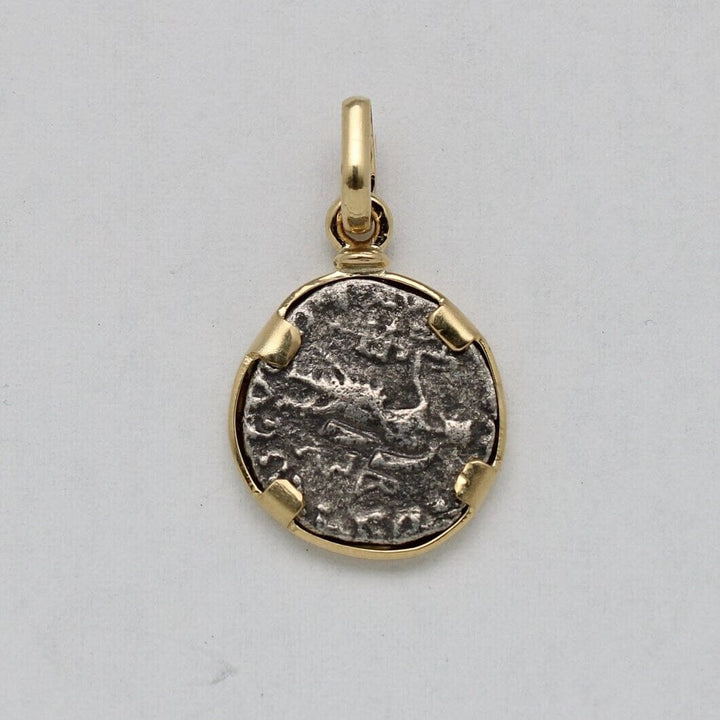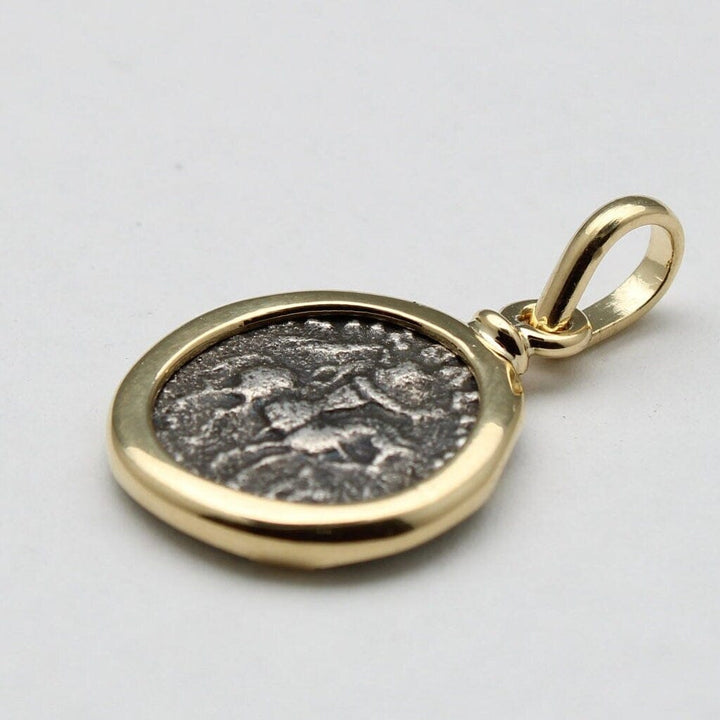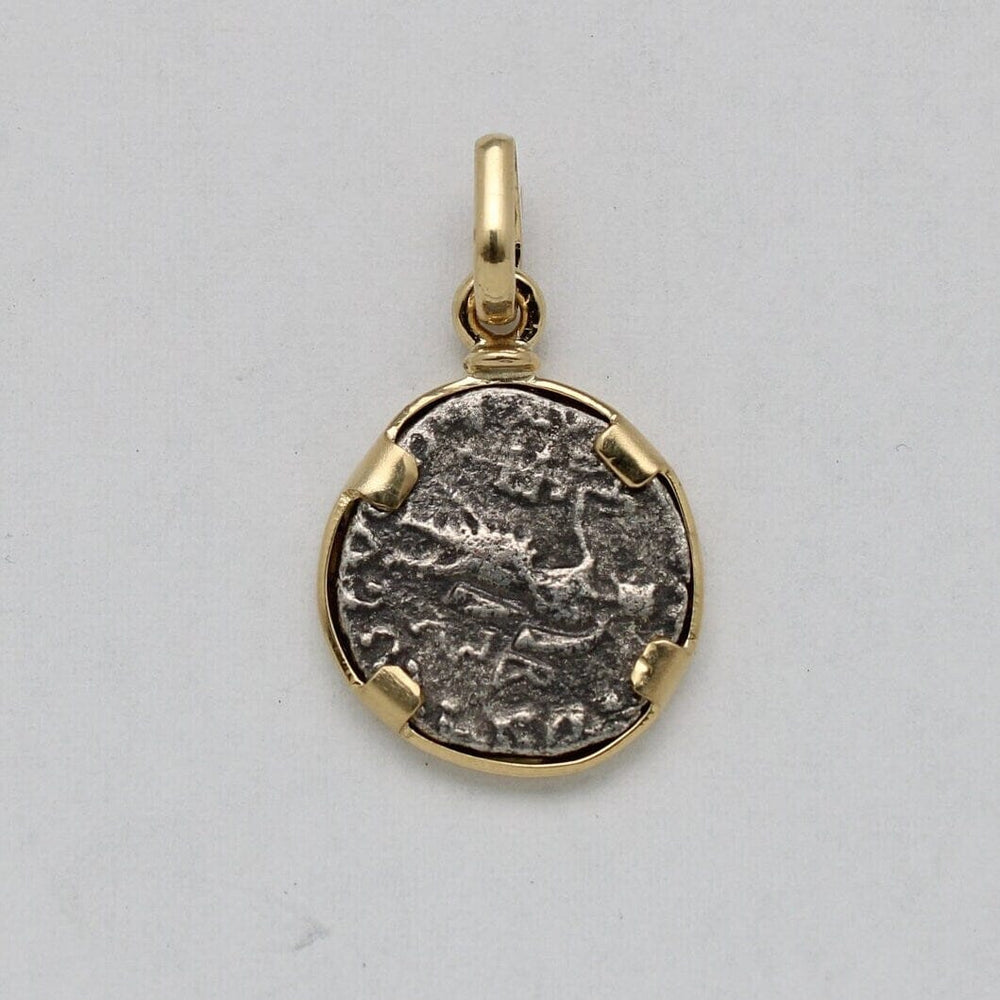Indo-Scythian Drachma Coin, 18K Gold Pendant, ID14720
- Low stock - 1 item left
- Inventory on the way
Denomination: Drachma Date: Circa 57 BCE – 15 BCE
Description: Indigenous Apracharaja Ruler of the Indo-Scythians (Sakas) empire.
Obverse: King holding a whip; mounted on horse walking right. Monogram is written to right and under horse. Written is a corrupt Greek legend.
Reverse: Pallas standing right with shield and long spear. Written is a Kharosthi legend.
Scythians were nomadic herders of the steppes north of the Black Sea. Their origin, just like their mother tongue, is essentially unknown. Scholars believe they have originated from modern-day Mongolia. They were among the first nomads riding domesticated horses, which gave them tremendous mobility and power. From the seventh century B. C. they dominated the Eastern part of Europe by conquering most other nomads and agricultural tribes.
The coins of the Indo-Scythians in northwestern India were probably designed by Indo-Greek celators because their coins bear Greek monograms, and still kept their Greek names and denominations. They displayed Greek legends and Greek divinities such as Zeus, Athena, Tyche, or Nike in a fine style.
Azes II's coins use Greek and Kharoshti inscriptions, and depict a Greek goddess as his patron. This use of the numismatic model of the Greek kings of the Indo-Greek kingdom suggests a high willingness to accommodate Greek culture. Keeping their own idea monarchal figure, the coins portray the king on horseback rather than as a bust as the Greeks usually did.
It has been speculated amongst some Christian scholars that third king in the story of the three wise men from the birth of Jesus was Azes II, while others have debated that all three were in fact his representatives.
The languages of the Scythian people are all considered extinct, and very little has survived in the way of record. Translating Scythian inscriptions is near impossible for now, due to there being no definitively identified alphabet. Because Indo-Scythian coins were often inscribed with Greek on one side, we are able to decipher dates, the name of the king and occasionally other phrases. Unfortunately, on this particular coin, the letters are undecipherable.




